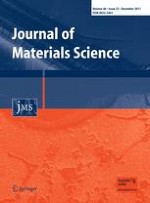Introduction
-
compute the stacking fault energy as a function of the chemical composition,
-
describe the interaction between dislocation glide and deformation twinning,
-
predict the resulting high work hardening rate due to dynamic microstructure refinement (dynamic Hall-Petch effect).
Model
Results and discussion
Parameters | Physical meaning | Value |
|---|---|---|
μ
| Shear modulus | 65 GPa |
b
| Burgers vector | 2.5 × 10−10 m |
M
| Taylor factor | 3.06 |
α
| Mean dislocation strength | 0.4 |
k
| Forest hardening | 0.025 |
f
| Dynamic recovery | 2.8 |
λ
| Mean spacing between slip bands | 1266b
|
F
0
| Maximum volume fraction of Twins | 0.2 |
e
| Twin mean thickness | 30 nm |
ε
init
| The critical strain at which twinning begins | 0.03 |
β
| – | 3 |
m
0
| – | 2 |
